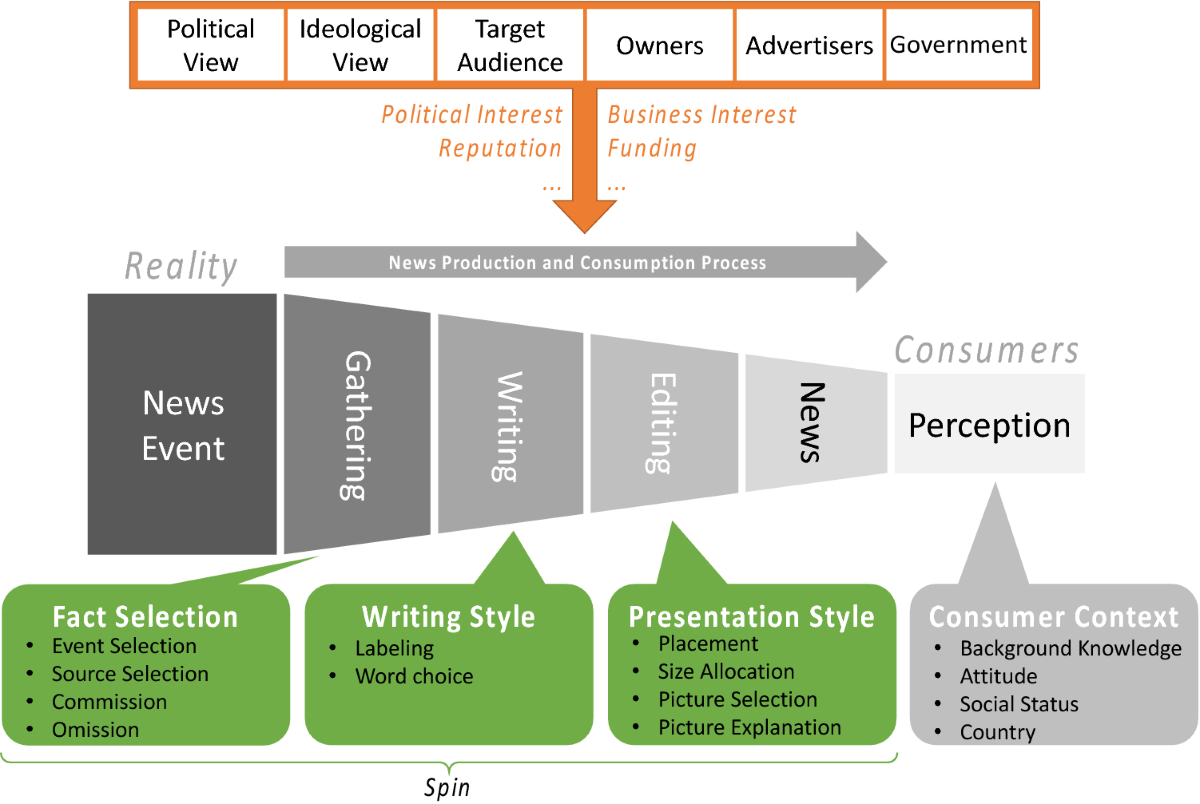Your cart is currently empty!

Navigating Media Bias
Navigating Media Bias: Strategies for Extracting Objective Truth
Media today can be overstimulating. In fact, it often is, and in today’s internet age, you can find something to confirm your bias wherever you look. This makes extracting truth from the rhetoric extremely challenging. I’d like to share my strategy for analyzing a wide range of news sources and extracting a narrative that is reasonably connected to the truth, short of having direct access to primary sources. This strategy involves reviewing the entire spectrum of media coverage on a specific topic, from far left, to mainstream, to far right. I do this because using an intellectually and ideologically diverse array of sources allows for the most comprehensive view of the information being presented, which helps identify any common threads that might point towards the underlying truth.
Gathering Diverse Sources
The first step in this approach is to gather news articles and reports from a wide range of sources. This includes media outlets with known biases towards the left, right, those considered mainstream, and those considered to be conspiracy or fringe. By doing this, you expose yourself to different perspectives and narratives surrounding the same event or issue. Each source may highlight different aspects or use varying tones and emphases, but the core facts should emerge through this diversity.
Identifying Common Threads
Once you have collected information from these varied sources, the next step is to identify the common variables mentioned by all. These commonalities represent the most consistent elements of the story and are less likely to be influenced by the individual biases of each source. By focusing on these shared facts, you can build a more accurate and reliable understanding of the topic at hand. Once you have this data collated, the next step is crucial.
Removing Emotive Language
Remove all emotionally charged language used in the reporting. Media outlets often use emotive language to sway readers’ opinions or to make their reports more engaging. Stripping away these emotional cues helps you focus on the substantive information and reduces the impact of any persuasive rhetoric that might cloud your judgment. Remember, the goal at this point is to develop a trustworthy narrative using fact-based analysis. Opinions can be developed once we are reasonably sure we have a trustworthy narrative.
Keep in Mind: Vet Information, not Sources
In an era of widespread misinformation, activist reporting, and corporate press, vetting the information itself can be more valuable than solely vetting the sources. This allows you to focus on the facts and their consistency across different platforms, rather than the perceived credibility of the sources. This is especially crucial in an era where a growing relationship between government and corporate press often results in heavily censored or skewed information.
Authoritarian governments often control media to maintain power, promoting narratives that align with their interests. In these environments, reliable information can be scarce, and the sources available are usually state-controlled or heavily influenced by the regime. Both fascist and communist governments have historically engaged in extensive censorship, suppressing dissenting voices and limiting access to unbiased information. In such scenarios, the emphasis is placed on the source of the information rather than the information itself. This creates a culture where the legitimacy of a message is judged based on its origin, often leading to the spread of propaganda.
Vetting sources in these environments can be misleading because even reputable-looking sources might be compromised or manipulated. Instead, critically analyzing the information itself becomes crucial to creating a fact-based worldview. By examining the core facts reported by numerous outlets, regardless of their bias, and cross-referencing them, individuals can piece together a more accurate picture of the truth. This method helps to filter out propaganda and identify consistent facts that can be corroborated by different narratives.
Stay Objective
Through extracting core facts and common elements, you can form a clearer, more objective view of reality. This method not only enhances your media literacy but also empowers you to think critically and independently about the information you consume. Promoting this strategy to those around you can help build a more informed and discerning community and foster a culture of critical awareness and thoughtful discourse.
P.S. Don’t forget! In environments with heavy censorship and biased reporting, vetting the information itself is a more effective strategy than vetting sources for discerning reality. It encourages comprehensive and critical evaluation of the facts, developing critical thinking skills that also empower individuals to seek the truth, even in the most controlled and censored societies.
Comments
4 responses to “Navigating Media Bias”
-
Very well explained. I’m in full agreement. The masses need to check this out. The youth need to read this. Thank you for posting.
-
Thank you so much for your support! I appreciate the kind words!
-
-
[…] Navigating Media Bias […]
-
[…] “Navigating Media Bias” – Chromo: Real Tools for Navigating Media Bias […]

Leave a Reply